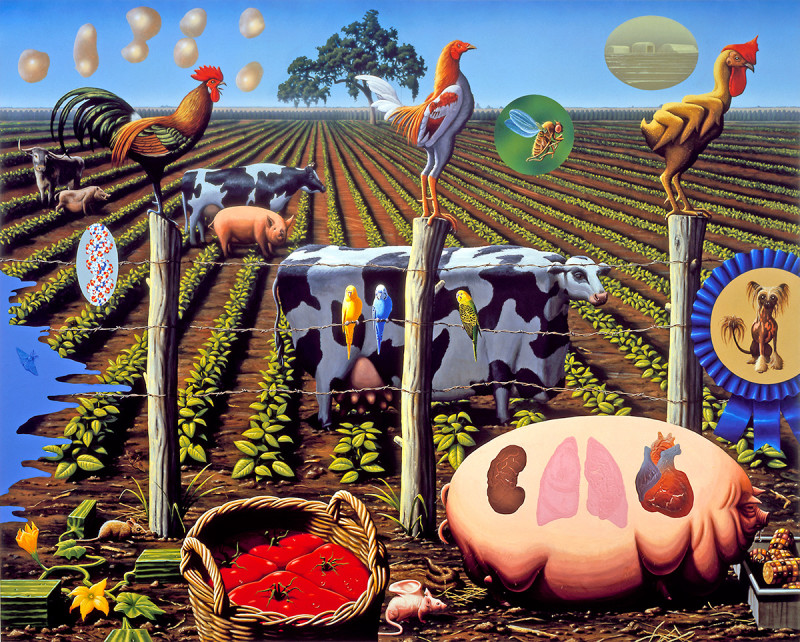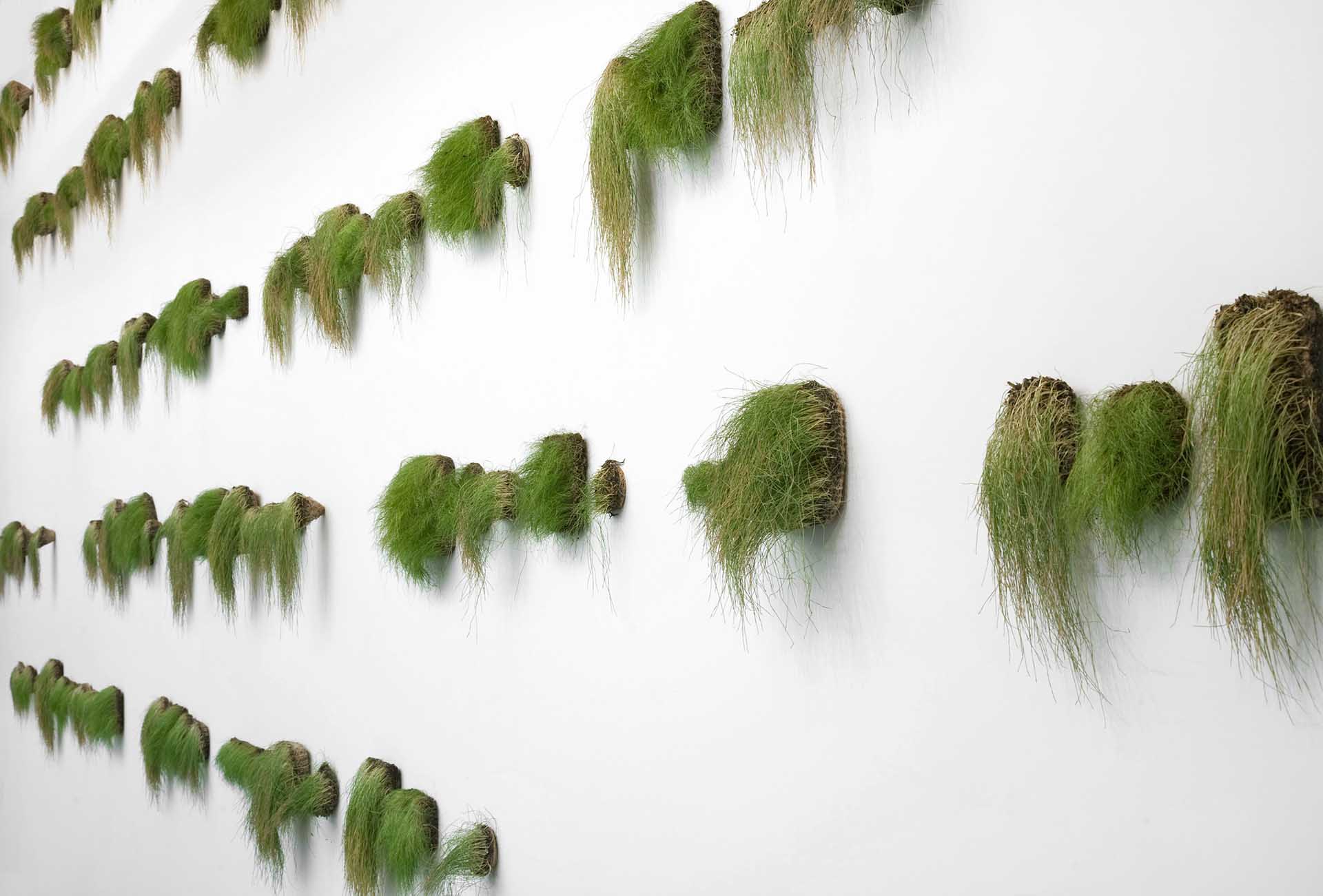
Monsanto Machine (detail): GM Code
Jeff Schmuki, 2009
Hydroponic genetically-modified wheat on wall, dimensions variable
Image © 2009, courtesy of the artist
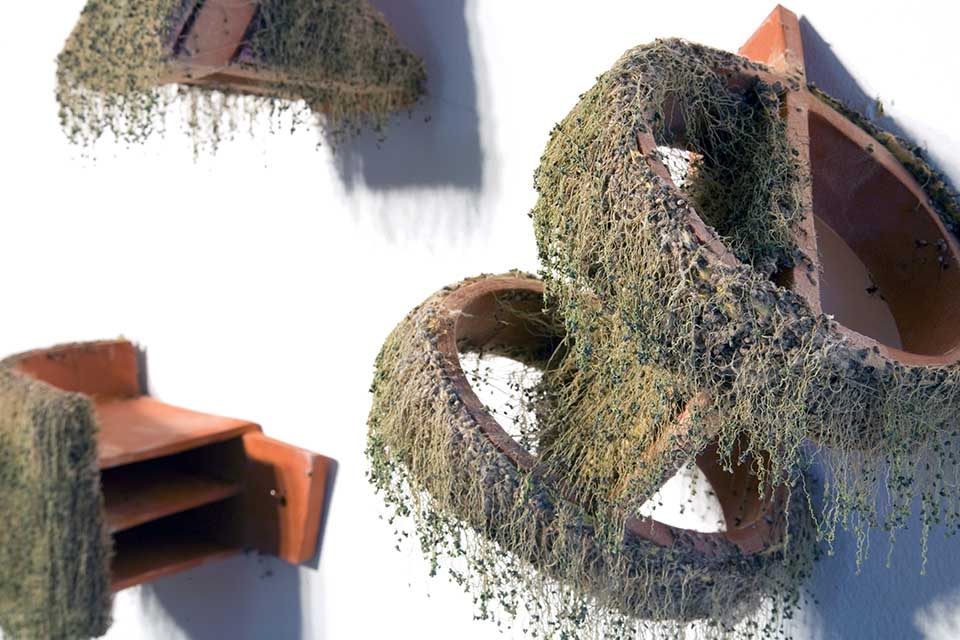
Nursury (detail)
Jeff Schmuki, 2011
Earthenware, cellulose sponge, chia sprouts, dimensions variable
Image © 2011, courtesy of the artist
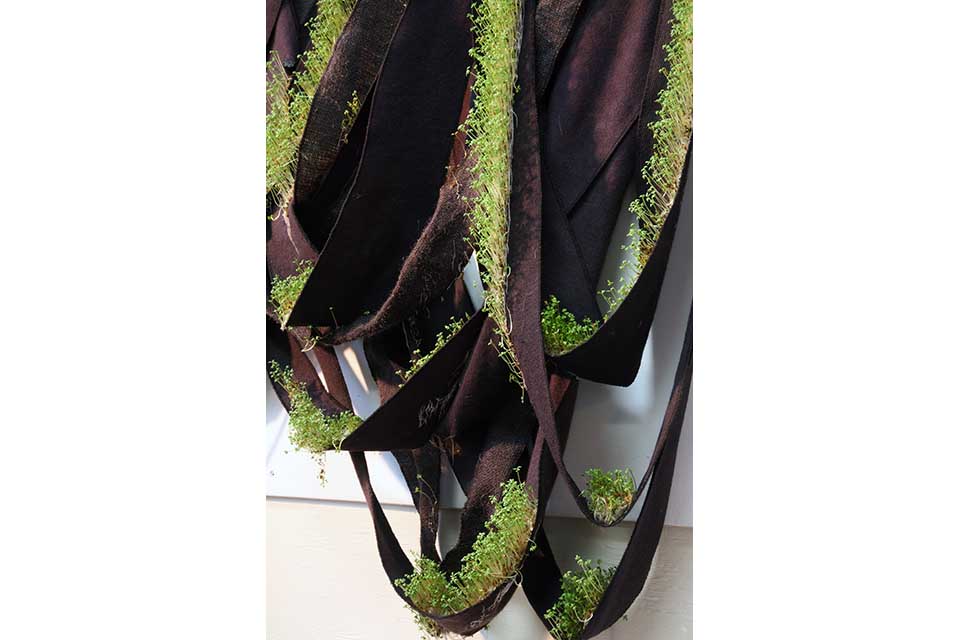
Drape (vertical garden IV) (detail)
Jeff Schmuki, 2009
Watercress, fabric, irrigation system, 45″ x 56″ x 7″
Image © 2009, courtesy of the artist
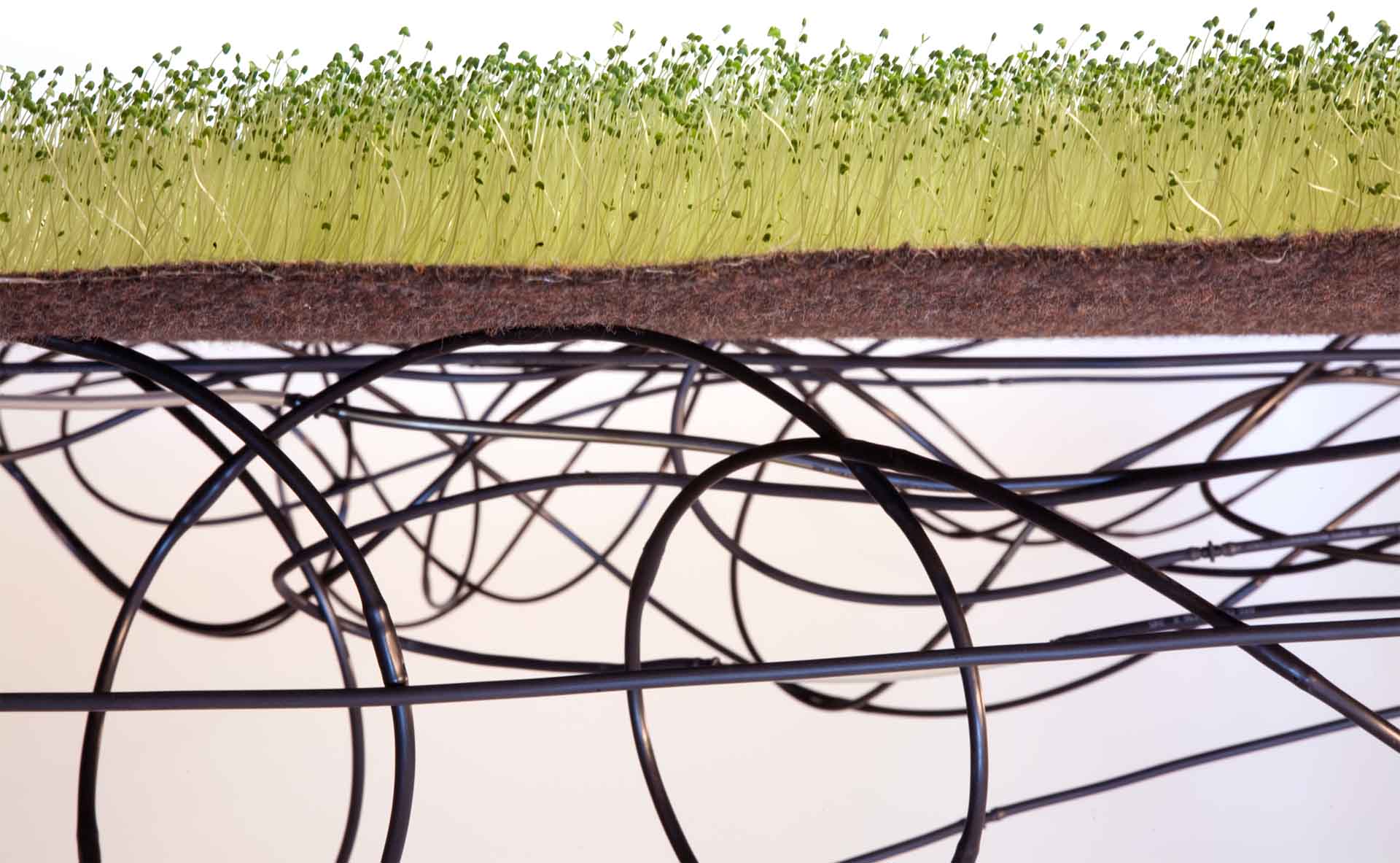
Chia Curtain (detail)
Jeff Schmuki, 2009
Chia sprouts, refashioned and recycled products, dimensions variable
Image © 2009, courtesy of the artist
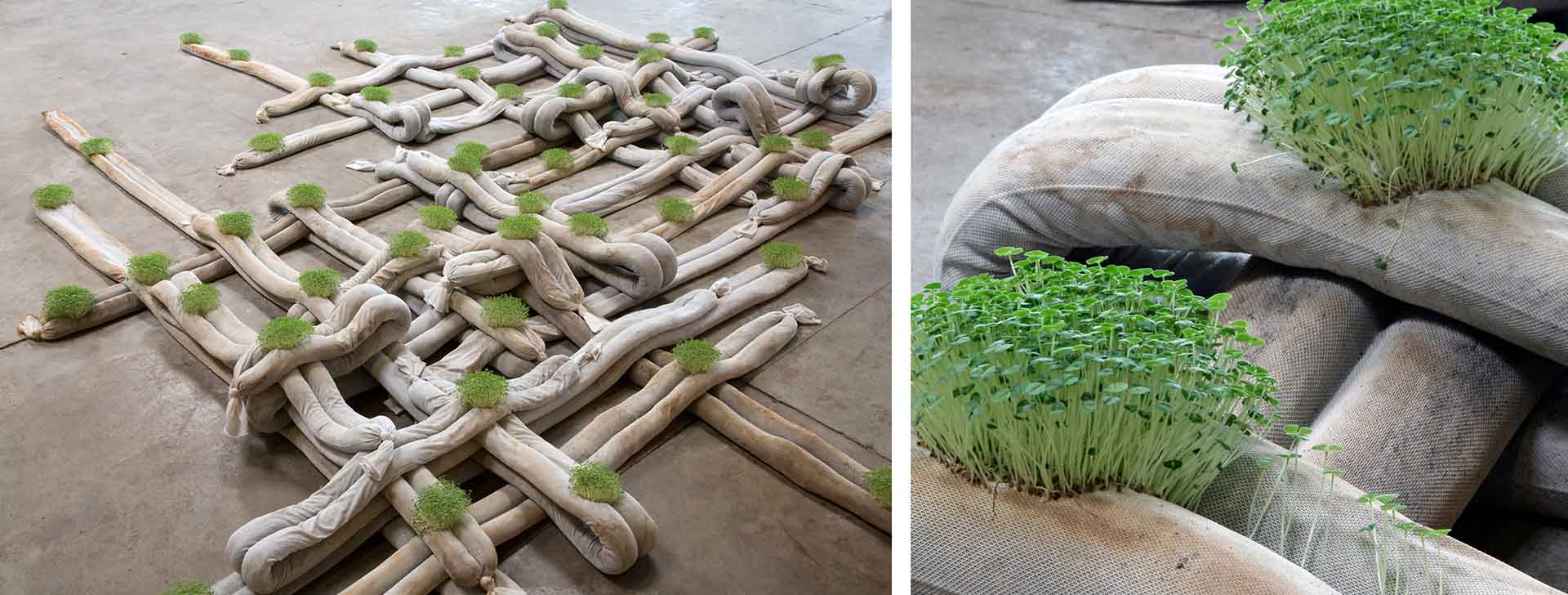
Lattice
Jeff Schmuki, 2009
Nylon, wheat and growth medium, dimensions variable
Image © 2009, courtesy of the artist
About the Artist
Jeff Schmuki explores the expressive qualities of plants as an artistic medium in his botanical drawings and wall installations. In works such as “Monsanto Machine: GM Code,” he employs genetically-modified plants to create a composition that resembles a genetic sequence. He disrupts the white walls and bare floors of human spaces with his programmed plantings, alluding to a future in which coding may disrupt our ecosystems. By leaving these installations to die in the gallery space, Schmuki ensures that we see the full cycle of intervention, as impressive feats of manipulation ultimately succumb to their isolation from the natural order.
Explore These Artworks
In the artist’s words:
“Sustainability, the marginalization of nature in city life, and confrontations between natural systems and the built environment must be addressed. I am interested in using existing spaces and creating disruptions by placing horticulture and alternative power in unexpected locations. These indoor/outdoor works create temporary green spaces that require care and supervision from the community. Such works demonstrate that nature can take on a new role in affording the community an opportunity to engage in a constructive solution to sustainability, one that leads to consensus building and empowerment.”
On GMO’s: “Transgenic plants contain genes derived from species within the same kingdom (plant to plant) or between kingdoms (animal to plant). This genetic modification to our food is so new and untested that we have no idea what long term effects it will have on those who consume it, the lands on which it is grown, or what wide-ranging environmental impact can occur.”
Critics of genetically-modified organisms (GMOs) warn that GMOs often lead to changes agricultural practices that are harmful to the environment, such as an increase in the use of herbicides.This article discusses the ongoing debate over the impact of GMOs on pesticide and herbicide use.
Jeff Schmuki and Alexis Rockman have very different approaches to portraying genetically-modified organisms. Schmuki references the patterned ordering of the genetic code itself while Rockman portrays surreal creatures from a future gone awry. Look for Alexis Rockman’s work in Part II of the exhibition.
The Farm, 2000, oil and acrylic on wood, 96″ x 120″
© Alexis Rockman, courtesy of the artist
Featured Actions:
* Buy food that is locally grown!
* Reduce food waste! Love your leftovers and cut down on excessive food purchases by planning ahead.
* Your pledge will be counted in Earth Day Network’s “A Billion Acts of Green” campaign. Learn more about this campaignhere.
Reserved for future conversations.










